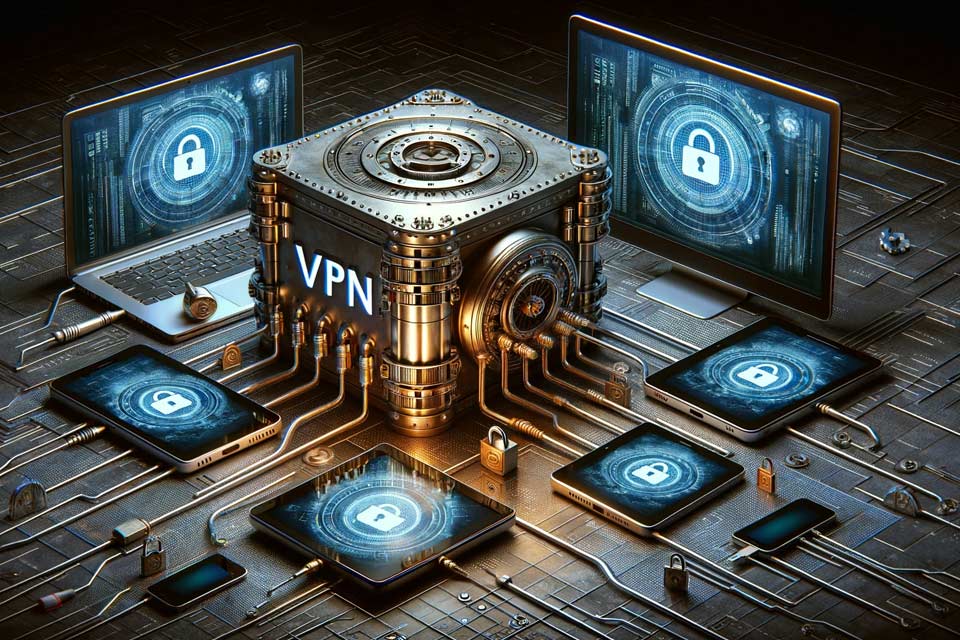
Setting up a Virtual Private Network (VPN) may seem intimidating especially if you’re not well versed in technology. However with this to follow guide you can quickly grasp how to establish a VPN connection on any device. This guide guarantees your privacy and security whether you’re surfing the web at home or while traveling. Lets get started!
Why Use a VPN?
A VPN is crucial for individuals who prioritize their privacy and security. By creating a pathway between your device and the internet a VPN conceals your IP address making it more difficult for third parties to monitor your activities.
For example when you’re working from a café. Utilising their Wi Fi network. Without a VPN hackers could intercept your data easily putting your financial details at risk. However with a VPN in place your data remains safeguarded on networks.
Furthermore utilising a VPN enables you to circumvent restrictions imposed by streaming services such, as Netflix or BBC iPlayer.
If you’re located in Australia but want to watch a show that’s only accessible on the US Netflix library, you can utilize a VPN to access that content.
How to Select the Right VPN Service?
Choosing the VPN service depends on your needs. If privacy is your priority opt for a VPN provider that doesn’t track your activities. For those interested in bypassing geo restrictions for streaming purposes consider a VPN recognized for its speed and multiple server locations.
While free VPNs may seem attractive they often come with limitations like data caps, fewer servers and slower connection speeds. Additionally some free VPN services have been reported to sell user data to parties. On the contrary, paid VPN services offer enhanced privacy protection, additional features and superior performance. Leading examples of VPN providers include ExpressVPN, NordVPN and CyberGhost.
Establishing Your Home Based VPN Server
Creating your VPN server at home grants you complete authority over your data. This eliminates concerns, about third party providers logging your activities or serving as weak points.
To create your VPN server you’ll require a computer (such as a small and energy efficient device like a Raspberry Pi) a reliable internet connection and some technical expertise. The setup process includes installing VPN software on your server (like OpenVPN) configuring your router to manage traffic flow and setting up clients on your devices to connect to the server.
How to Install the VPN Client on Windows?
Many VPN providers offer an application for Windows. Once you’ve subscribed to a VPN service, download it. Install the application on your computer. Then log in with your VPN account credentials.
Once logged in you can choose a server location from the providers list. After connecting to the server your online activities will be. Secure. Make sure to verify your IP address and after connecting to ensure that everything is functioning correctly.
How to Configure a VPN on Android Devices?
Setting up a VPN on an Android device is simple. Most leading VPN providers have an app on the Google Play Store, for Android users.
After installing the app open it. Log in with your account information. Then select a server location. Click Connect.
Once you establish the connection you can safely start browsing.
Setting up a VPN on an iOS device is quite similar, to doing it on an Android device. Simply download the app from the App Store. Install it on your iOS device.
After installation launch the app. Sign in using your account credentials. Choose a server location. Press the connect button. Your iPhone or iPad will now be connected to the VPN ensuring that your online activities are secure.
To configure a VPN on your router, which allows you to safeguard all devices connected to your home network without installations you’ll need a router that supports VPN setup. Access your routers settings locate the VPN section and input the details provided by your VPN service provider. While this process may seem technical most VPN providers offer instructions for assistance.
If you prefer control over settings or do not wish to use an app you can manually set up a VPN connection, on your device.
For instance if you’re using Windows 10 navigate to Settings > Network & Internet > VPN > Add a VPN connection. You’ll then be required to input the details provided by your VPN service, such, as the server address, type of VPN and login information.
Tips for Optimizing Your New VPN Connection
After setting up your VPN connection it’s important to remember a points. Always ensure that your VPN is connected before browsing to maintain anonymity. Keep in mind that using a VPN may result in internet speeds due to data encryption.
If you encounter connectivity issues or experience speeds consider switching servers. Some servers might be crowded with users leading to decreased speeds.
In Conclusion; Simplifying the Setup and Utilization of a VPN on Any Device
Configuring a VPN doesn’t have to be complex. By following this guide you can effortlessly. Utilise a VPN on any device for increased privacy and security. Opt for a VPN provider. Ensure your connection is active while browsing online. Enjoy surfing!
Key Points;
-VPNs play a role, in safeguarding privacy and security particularly on public Wi Fi networks.
-Choosing the VPN depends on needs.
-Paid VPN services typically provide performance and privacy compared to their counterparts. To have control over your data, you have the option to create your VPN server at home. The process of establishing a VPN includes either installing an application or manually adjusting your device settings. It is crucial to ensure that your VPN connection is active, before browsing to safeguard your anonymity. In case you encounter speeds consider switching servers as a troubleshooting step.


